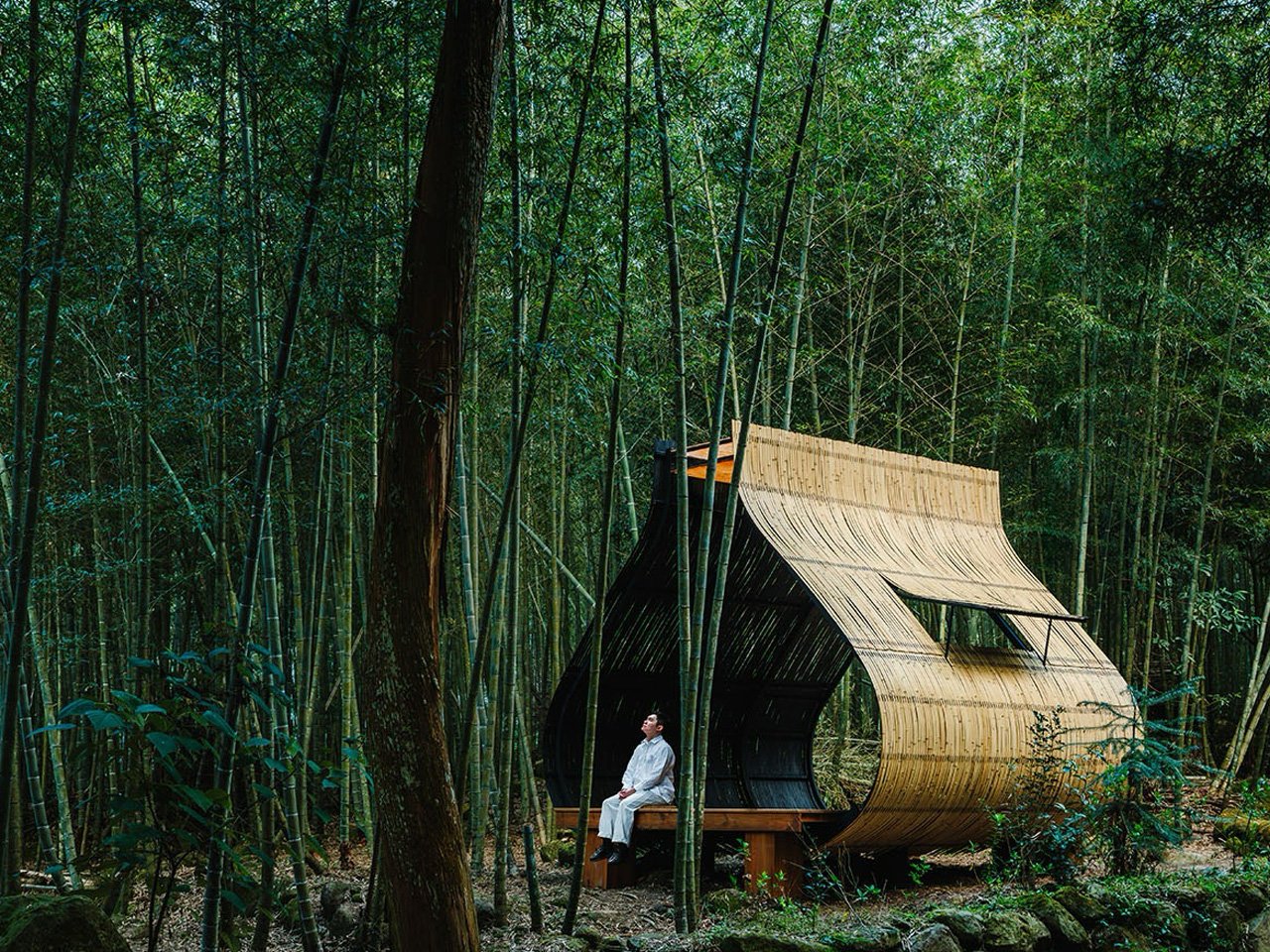Cheng Tsung Feng’s latest creation in the bamboo forests of Nantou, Taiwan, is quite fascinating and unique. His Bamboo Cabin Plan: Sticky Rice Dumpling sits quietly among the Moso bamboo if it grew there naturally. The 3.4 by 4.3 by 3.6 meter structure takes its cues from zongzi, those leaf-wrapped rice dumplings that define comfort food across Taiwan. Built for the Nantou Bamboo Dream Festival, this isn’t just another art installation. It’s a genuine sanctuary where traditional craft meets contemporary spatial thinking. The cabin embodies the festival’s Six Senses theme by creating a space you want to touch, smell, and inhabit.
Feng has always understood how to translate intimate gestures into architectural moments. Here, he takes the simple act of wrapping dumplings and scales it up without losing the tenderness. Bamboo stalks curve inward like protective hands, creating walls that breathe with the forest around them. The structure feels both ancient and immediate, rooted in memory but designed for today’s need for quiet spaces. Light filters through the woven walls in shifting patterns that change throughout the day. You can hear the forest through the permeable structure, insects humming and leaves rustling just outside.
Designer: Cheng Tsung Feng
The cabin works because it doesn’t fight its environment. Open weaving creates natural air circulation while blocking harsh sun. The interior responds to forest rhythms rather than imposing human schedules. Metal connections and nylon rope bindings support the bamboo framework without calling attention to themselves. When darkness falls, integrated fluorescent lighting keeps the space welcoming for evening visitors. Every detail serves the larger goal of creating a place people actually want to spend time in.
Feng lets bamboo be bamboo, embracing the material’s natural character rather than forcing it into unnatural shapes. Each stalk contributes its own texture and curve to the overall composition. The construction process honors traditional bamboo working methods while pushing into contemporary territory. You can see how the builder’s hands shaped each joint and connection. The material’s sustainability story matters, but it’s the immediate sensory experience that hooks you. This grass-turned-timber creates spaces that feel warm and alive.
The project sits perfectly in that sweet spot between art and architecture where Feng’s work shines. Like his earlier fish trap installations, this cabin captures visitors in carefully crafted spatial experiences. It functions as shelter while engaging your senses in ways that typical buildings don’t. The temporary nature feels right for bamboo’s lifecycle, creating architecture that acknowledges change while celebrating present moments. Step inside, and urban noise fades into forest sounds.
This bamboo sanctuary proves sustainable architecture doesn’t have to sacrifice beauty for environmental responsibility. Feng shows how traditional knowledge can inform contemporary design without turning into costume drama. The cabin demonstrates bamboo’s architectural potential beyond the obvious applications. Within Taiwan’s bamboo groves, ancestral wisdom finds fresh expression through thoughtful contemporary interpretation. Sometimes the most radical thing you can do is create a quiet place to sit and think.
FAQs
1. What are zongzi, and why did Cheng Tsung Feng choose this as his design inspiration?
Zongzi are traditional Taiwanese sticky rice dumplings wrapped in bamboo or reed leaves and tied with string. Feng chose this form because it represents an intimate, familiar cultural gesture that translates beautifully into architectural scale while honoring local food traditions.
2. How long will the bamboo cabin remain standing?
The cabin is designed as a temporary installation aligned with the festival’s duration. Its temporary nature reflects bamboo’s natural lifecycle and the conceptual framework of impermanence in traditional Asian philosophy.
3. What makes this different from other bamboo architecture projects?
This project uniquely combines traditional food culture references with contemporary spatial needs, creating architecture that functions as both an art installation and a practical shelter while maintaining deep cultural resonance.
4. How structurally sound is a bamboo building like this?
Bamboo has excellent structural properties with higher compressive strength than concrete and tensile strength rivaling steel. The cabin uses traditional bamboo joinery reinforced with metal connections and nylon rope for additional stability.
The post Innovative Bamboo Cabin Design Is Inspired By Taiwanese Sticky Rice Dumplings first appeared on Yanko Design.

